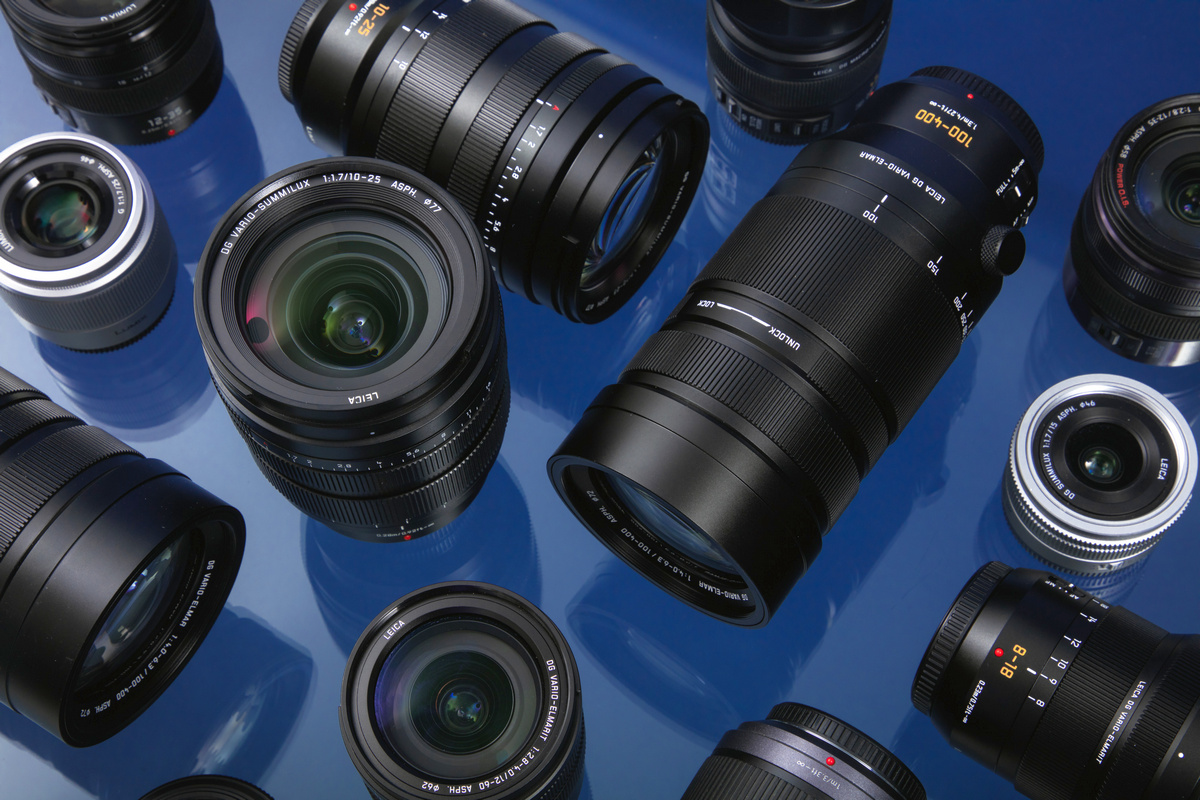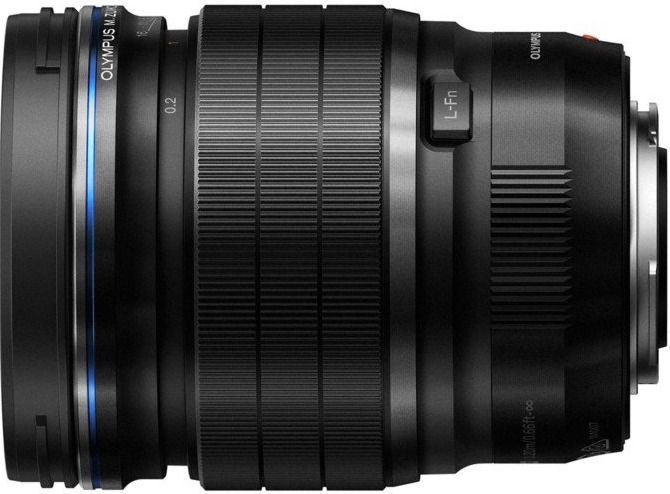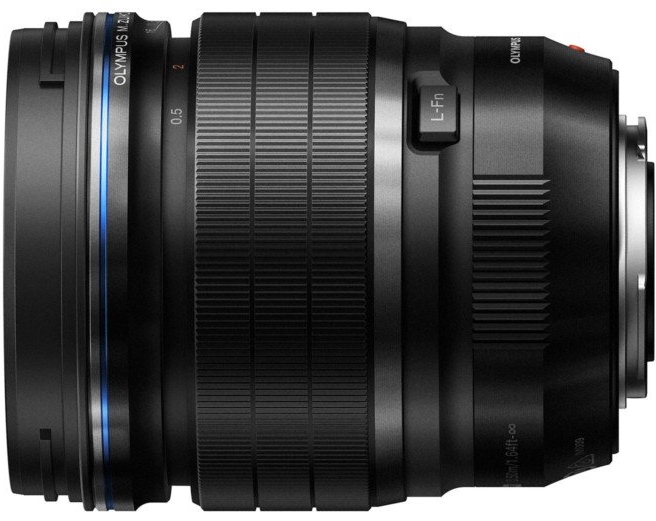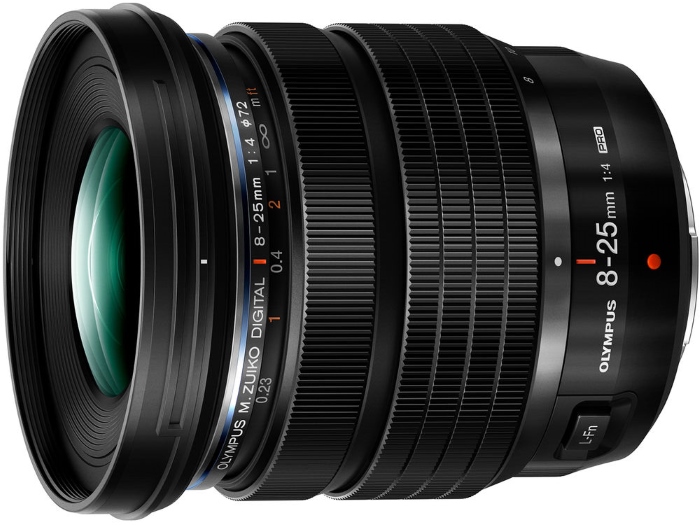TOP 5 popular lenses for Micro 4/3 mirrorless cameras

It is proposed to familiarize yourself with the technical parameters of the models from the review in the comparative table of popular optics for the Micro 4/3 system. You can select your own lens in the catalog section of the same name. And “Marking of Panasonic and Olympus lenses” is given in the corresponding material.

| Justbuy.com.ua | 37 410 ₴ | To Store |
| KT-group.ua | 39 000 ₴ | To Store |
| click24.biz | 49 159 ₴ | To Store |
| Horoshiy.com.ua | 33 500 ₴ | To Store |
| Ebox24.biz | 47 960 ₴ | To Store |
Olympus' optics portfolio for mirrorless cameras with Micro 4/3 sensors includes a trio of super-fast prime lenses: 17mm, 25mm and 45mm. The first is a universal option for solving a wide range of problems, the second is an analogue of “fifty dollars” in the equivalent of a full frame, and the third is used in the portrait genre of photography.
The wide-angle Olympus M.Zuiko Digital ED 17mm f/1.2 PRO performs well in architectural and landscape photography, as well as in street photography. The high aperture of the lens is designed to compensate for insufficient background blur due to the reduced physical dimensions of the image sensor of the Micro 4/3 series of cameras. And the model’s rendering of bokeh is really a solid “A” - due to the adjusted lens shape and 9-blade aperture, high sharpness in the focus area and soft shaded bokeh in the defocus area are obtained without the use of apodization filters.
The optical design of the lens contains ultra-low dispersion ED elements and dual super-aspherical DSA lenses, which help reduce harmful optical artifacts such as chromatic aberrations and distortions. And the phenomenon of vignetting will disturb the frame only at the most open apertures.
Hidden inside the lens body is a fast and silent autofocus drive. On the outside there is a programmable L-Fn button and a wide, soft-action focusing ring. Switching between automatic and manual focusing is done by sliding the ring toward you. In addition, the model will please you with its compact size and low weight (less than 400 g) - it looks harmoniously on the “body” of a compatible camera and does not change the center of gravity of the camera and lens combination.

| click24.biz | 50 307 ₴ | To Store |
| Horoshiy.com.ua | 55 000 ₴ | To Store |
| Ebox24.biz | 49 080 ₴ | To Store |
| Ok24.biz | 68 880 ₴ | To Store |
| Tehnoexpert.com.ua | 48 364 ₴ | To Store |
Every passionate photographer must have a good portrait photographer. For owners of Micro 4/3 mirrorless cameras, such a lens will be the Olympus M.Zuiko Digital ED 45mm f/1.2 PRO.
The key feature of the model is the highest aperture of f/1.2. Shooting wide open gives the effect of soft, feathered bokeh, which is highly prized in portrait photography. The lens “draws” excellent blur in out-of-focus areas, not only in the background, but also in the foreground. Pleasant bokeh structure is provided by the 9-blade diaphragm design.
The Olympus M.Zuiko Digital ED 45mm f/1.2 PRO is assembled using the optical formula “14 elements in 10 groups”. The lens design includes ED elements with ultra-low dispersion and DSA - dual super-aspherical lenses. They are intended to eliminate chromatic aberrations and distortions. And to avoid spurious reflections, the optical elements are coated with a proprietary Zero Coating coating.
The lens impresses with its highest sharpness from open apertures, fast and silent autofocus, and well-developed ergonomics. So, to switch focusing modes, just pull the focusing ring toward or away from you. In addition, a programmable “L-Fn” button is located on the body of the model. In the hands of a skilled photographer, the lens will be a powerful tool for realizing creative potential.
| Justbuy.com.ua | 40 810 ₴ | To Store |
| KT-group.ua | 39 500 ₴ | To Store |
| Цифра | 45 144 ₴ | To Store |
| Stylus.ua | 45 681 ₴ | To Store |
| click24.biz | 42 271 ₴ | To Store |
Among the “wides” for the Micro 4/3 system, the fastest aperture zoom lens Panasonic Leica DG Vario-Summilux 10-25mm f/1.7 ASPH seems to be the most tasty offer. However, you can buy a slightly wider model M.Zuiko Digital ED 8-25mm f/4 PRO from OM System for an order of magnitude cheaper.
The lens covers a range of equivalent focal lengths from 16 to 50 mm. Accordingly, it is supposed to be used for shooting a wide variety of scenes, be it interiors, landscapes or even full-length portraits. The model's aperture remains at f/4 throughout the entire zoom range. Its value is small, so the effect of shallow depth of field can only be achieved when shooting close-ups. Fortunately, the lens focuses from 23 cm relative to the plane of the camera matrix.
When zooming, a characteristic tube emerges from the front lens barrel, but the M.Zuiko Digital ED 8-25mm f/4 PRO focuses internally. Moreover , to switch focus modes, a proprietary system of shifting the focusing ring toward and away from you is used. The lens' optical design features 16 elements in 10 groups, including a Dual Super Spherical DSA lens to minimize aberrations and a special ZERO coating that helps prevent flare and ghosting.
To complete the picture, the only thing the lens lacks is an optical stabilizer. It definitely wouldn’t come in handy here given the aforementioned f/4 aperture. However, even without a stub , the model will become a faithful companion to any owner of a camera with a Micro 4/3 format image sensor. Let us remember that such cameras include cropped mirrorless cameras from the Olympus and Panasonic brands.
| KT-group.ua | 30 200 ₴ | To Store |
| Repka.ua | 33 675 ₴ | To Store |
| Moyo.ua | 33 675 ₴ | To Store |
| Tviy-Dim.com | 34 883 ₴ | To Store |
| Panashop.com.ua | 33 999 ₴ | To Store |
Each system must have a high-quality lens with an equivalent set of focal lengths of 24-70 mm and a constant aperture of f/2.8. For cameras with a Micro 4/3 format image sensor, this is the Panasonic Leica DG Vario-Elmarit 12-35mm f/2.8 ASPH Power OIS
The model was released at the very end of 2022, and specialists from the reputable German company Leica had a hand in its development. In general, the optical design of the model has 14 elements in 9 groups. One lens is ultra-low dispersion (UED), another is ultra-high refractive index (UHR), and four elements are aspherical. Additionally, the design uses a nanocoating for glare protection.
The lens covers the most popular focal length range and, thanks to its reduced breathing effect, is optimally suited for video shooting. The model has internal focusing, and a microstepping motor is used to control the aperture, ensuring smooth closing of the hole. By the way, the model produces a razor-sharp image from an open aperture across the entire range of focal lengths.
An integral attribute of the model is the optical stabilization system Power OIS. Moreover, the lens is assembled in a compact and lightweight body - it adds about 300 g to the weight of the camera body. With all the advantages, the zoom lens has acquired a dust- and moisture-proof body, which is of particular benefit to the model.
| Justbuy.com.ua | 36 110 ₴ | To Store |
| KT-group.ua | 34 250 ₴ | To Store |
| Stylus.ua | 39 090 ₴ | To Store |
| Цифра | 38 984 ₴ | To Store |
| click24.biz | 53 587 ₴ | To Store |
Telephoto lenses with a focal length range of 70-200 mm have found success with professional photographers in all corners of the globe. It is precisely these zoom limits that are spelled out in the “passport” of the Panasonic Lumix GX Vario 35-100mm f/2.8 II Power OIS model, a compact telephoto for Micro 4/3 mirrorless cameras.
The housing for the optical design of the lens (18 elements in 13 groups) was a body with dimensions of less than 10 cm in length and a weight of about 357 g. Compared to, for example, a 1.5-kilogram Canon EF 70-200mm f/2.8L IS III USM SLR telephoto camera, it looks a real “thumbelina” and will not burden the photographer’s load with extra weight. The controls on the lens body include zoom and manual focusing rings, and there is also a two-position optical stabilizer slider.
The maximum aperture of the lens remains constant throughout the entire range of focal lengths - f/2.8. And taking into account the excellent sharpness across the entire field of the frame, shooting birds or portraits in non-ideal lighting conditions with an open aperture will be much easier. The only complaint about the telephoto is the 7-blade aperture design. In a model with a pronounced focus on portrait photography, I would still like to see 9 aperture blades to obtain more spectacular bokeh.
The telephoto will reveal itself in all its glory together with mirrorless cameras from Olympus and Panasonic. It is obliged to replenish the optics fleet of any adherent of the Micro 4/3 system, who cannot imagine existence without photographing portraits, animals, close-ups or children. Well , any of the filters with a diameter of 58 mm will be used as an additional “body kit” on the front element of the lens.
Articles, reviews, useful tips
All materials






































